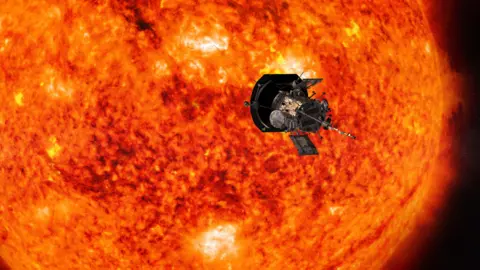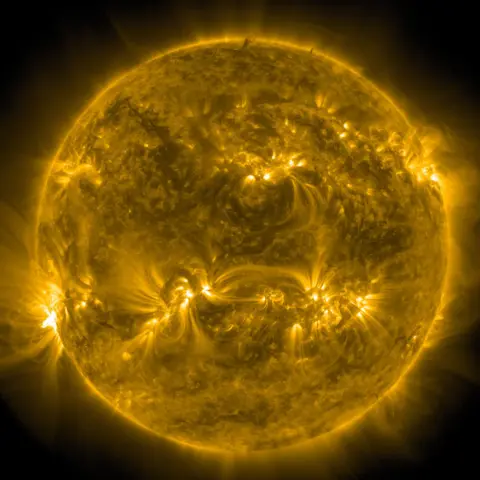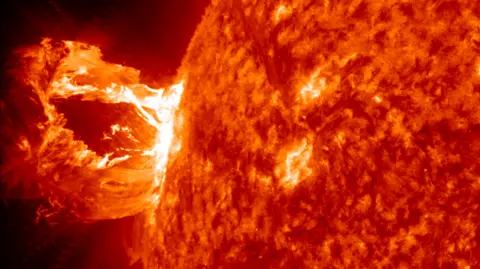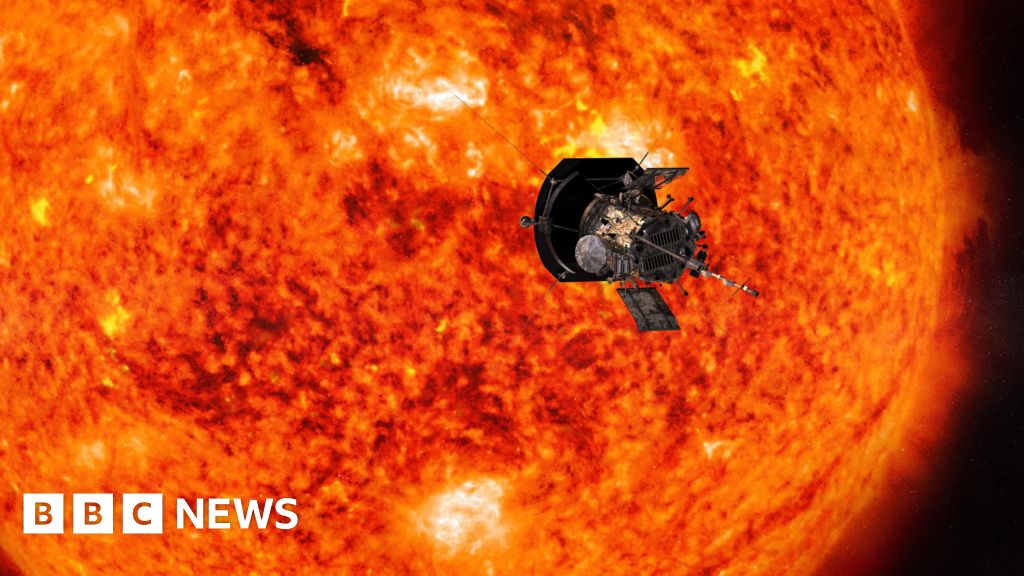 NASA
NASAA Nasa spacecraft is attempting to make history with the closest ever approach to the Sun.
The Parker Solar Probe is plunging into our star’s outer atmosphere, enduring brutal temperatures and extreme radiation.
It’s out of communication for several days during this burning hot fly-by and scientists will be waiting for a signal, expected on 27 December, to see if it has survived.
The hope is the probe could help us to better understand how the Sun works.
Dr Nicola Fox, head of science at Nasa, told BBC News: “For centuries, people have studied the Sun, but you don’t experience the atmosphere of a place until you actually go visit it.
“And so we can’t really experience the atmosphere of our star unless we fly through it.”
 NASA
NASAParker Solar Probe launched in 2018, heading to the centre of our Solar System.
It has already swept past the Sun 21 times, getting ever nearer, but the Christmas Eve visit is record-breaking.
At its closest approach, the probe is 3.8 million miles (6.2 million km) from our star’s surface.
This might not sound that close, but Nasa’s Nicola Fox puts it into perspective: “We are 93 million miles away from the Sun, so if I put the Sun and the Earth one metre apart, Parker Solar Probe is four centimetres from the Sun – so that’s close.”
The probe will have to endure temperatures of 1,400C and radiation that could frazzle the onboard electronics.
It’s protected by a 11.5cm (4.5 inches) thick carbon-composite shield but the spacecraft’s tactic is to get in and out fast.
In fact, it will be moving faster than any human made object, hurtling at 430,000mph – the equivalent of flying from London to New York in less than 30 seconds.
 PA Media
PA MediaSo why go to all this effort to “touch” the Sun?
Scientists hope that as the spacecraft passes through our star’s outer atmosphere – its corona – it will solve a long standing mystery.
“The corona is really, really hot, and we have no idea why,” explains Dr Jenifer MIllard, an astronomer at Fifth Star Labs.
“The surface of the Sun is about 6,000C or so, but the corona, this tenuous outer atmosphere that you can see during solar eclipses, reaches millions of degrees – and that is further away from the Sun. So how is that atmosphere getting hotter?”
The mission should also help scientists to better understand solar wind – the constant stream of charged particles bursting out from the corona.
When these particles interact with the Earth’s magnetic field the sky lights up with dazzling auroras.
But this so called space weather can cause problems too, knocking out power-grids, electronics and communication systems.
“Understanding the Sun, its activity, space weather, the solar wind, is so important to our everyday lives on Earth,” says Dr Millard.
 NASA
NASANasa scientists face an anxious wait over Christmas while the spacecraft is out of touch with Earth.
Nicola Fox says that as soon as a signal is beamed back home, the team will text her a green heart to let her know the probe is OK.
She admits she’s nervous about the audacious attempt, but she has faith in the probe.
“I will worry about the spacecraft. But we really have designed it to withstand all of these brutal, brutal conditions. It’s a tough, tough little spacecraft.”


Leave a Reply